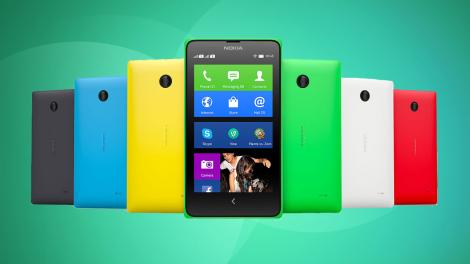
Introduction
Ever since Nokia decided to go all-in with Windows Phone, there has been a nagging feeling that it would have been better off using Android as its mobile operating system of choice.
A feeling that has got stronger as Android devices have so rapidly taken over the lion’s share of smartphone sales.
At Mobile Web Congress in February 2014, Nokia finally fulfilled this dream by announcing the Nokia X range comprising the Nokia X (reviewed here), a higher specified X+ and the physically larger Nokia XL. Not just one Android phone, but a whole range.
There was more than a little irony in seeing Stephen Elop, once a Microsoft stalwart and the architect of Nokia’s Windows Phone strategy announcing these new devices on stage. He went to great pains to point out that the Nokia X is a phone running AOSP, the Android Open Source Project.
This project underpins every Android phone in the world. As always in the Nokia story, it is not quite as simple as that. While the Nokia X runs Android, it does not run Google Android.
Briefly, Android as we know it is typically made of two parts; the underlying Android system and the Google apps. The underlying Android system is what the Nokia X runs along with all the usual well known Android phones such as the Samsung Galaxy S range and the HTC One M8.
Unlike those devices though, the Nokia X does not run Google apps. In order to run Google apps – Gmail, Maps, Calendar, Google Now etc – phones need to be certified. Nokia has not taken this step and it has done so on purpose.
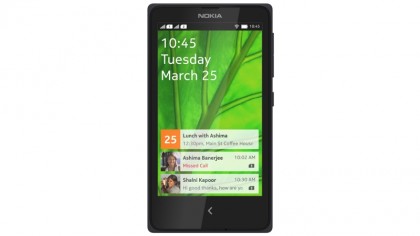
The Nokia X software is based off of Android 4.1, a version released in July 2012. There is so far no information on updates but we can only hope Android 4.4 is planned as that version is designed to run on lower end hardware.
Nokia has designed the X to use the equivalent services from itself and from Microsoft, and Nokia has provided an API for everything that Google provides meaning that developers should be able to port apps quite easily.
This makes the Nokia X an Android phone by name, but one that would perhaps be unfamiliar to those already used to running Android on other mainstream devices. If you are thinking of switching to the Nokia X from another Android device, it is most important to note that the Play Store is not available.

It is possible to side-load any legally obtainable apps including other app stores such as the Amazon app store, but even that wont bring Google services to the Nokia X.
Who would have imagined a Microsoft product running Android? It does seem like an anomaly. I guess that sales figures will be a big factor in the decision making for them, but this is far more a Nokia phone than a Microsoft phone.
Moving on from this mixed outlook, what do you get on the Nokia X? The standout software included are Nokia HERE Maps, a fantastic alternative to Google apps, and Nokia MixRadio which is a great way to stream your favorite music on demand.
Instead of the Play Store you will find the Nokia Store, which is already starting to fill out with many top apps. Nokia include Facebook and Twitter apps along with BlackBerry Messenger as standard. Various simple games are loaded on the X as well. All these apps run on a heavily customised version of Android 4.1.

Powering the Nokia X is a dual-core Snapdragon S4 Play processor running at 1GHz with 512Mb of RAM and 4GB of internal storage, which can be supplemented by a microSD card. The X has a 4-inch WVGA (800 x 480) LCD display and a fixed focus 3MP camera on the back. There’s no front facing shooter.
These are very modest specs indeed and that does end up informing the whole experience of using the Nokia X.
What makes up for that is the price, the range starts at just €89 (around £75, $120, AU$135). This is a phone targeted at emerging markets, at people who are buying their first smartphone and perhaps their first phone. Some buyers of the Nokia X will have never bought any sort of computing device before.
Nokia is bringing the X range to Europe, including the UK, but it has been clearly designed to replace the top end of Nokia’s Asha range of phones. The Asha range is filled with very nicely designed but slow and simple feature phones, which have very limited capabilities.
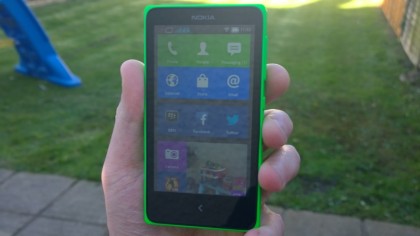
The Nokia X is a decent step up from an Asha device and has the potential to do a lot more. Here in the UK, other reasonable smartphones are available for a similar price as the X but in its first market, India, this is not the case. Phones at a similar price point suffer from extremely bad design and build quality and very poor performance.
Despite the meager specifications and just a 1500mAh battery, the Nokia X provides a reasonable upgrade for users in these emerging markets who are upgrading from either feature phones or locally produced budget handsets which simply will not have Nokia’s level of design and build.
When you pull the rear shell off the Nokia X model it is possible to see another indicator as to the target markets for this new range. The Nokia X is a dual SIM device.
In many other markets, the best value for cellular connectivity is achieved by separating your contracts for voice usage and data usage, which mandates two SIM cards. It’s like running your calls through Vodafone and your data through T-Mobile.

On the X, the dual SIM setup supports dual standby that means both SIM cards can be active at the same time. Only slot one supports 3G connections, so that is where you will want to put your data SIM. Both slots are of the micro SIM variety. There is no 4G in sight here, but that is hardly a surprise.
The X range comes in a lovely range of colours with the basic X is available in black, white, cyan, yellow, bright red and the bright green, which is especially striking. The slightly higher spec X+ shares the same palette while the larger XL swaps the red for an even nicer orange colour.
Nokia has done what Nokia always seems to do at the budget end of its range. It has designed and built a phone that looks and feels more expensive than it is, something Nokia do not get enough plaudits for.
Design
If you buy a bright green Nokia X the colour is all you can see at first. It is incredibly bright. As soon as you start to handle the phone though, the other thing to note is how solid it feels and how well it is built.
Nokia has long been the master of plastic and it continues to use the material in a way that most other manufacturers can only dream of. The plastics on the X are reasonably hard but not at all scratchy, having an almost soft feel. The edges and angles are sharp but in a positive way, they never dig in.
All of the port cutouts including the speaker on the back of the Nokia X have soft edges, which adds to the quality feel.
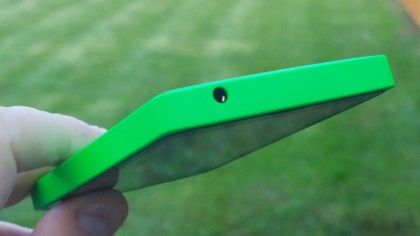
It is a somewhat square device but sits very comfortably in the hand and all the controls are within easy reach. The size of the phone is well judged and it is easy to hit all four corners of the screen without stretching.
It is not the most svelte device on the market but then you should not expect it to be at its price. The thickness is not a hindrance though and the Nokia X never feels bulky.
There are gentle curves leading to the edges of the back of the Nokia X that seem to serve two purposes. Firstly they make the phone feel less bulky than it really is, and secondly these curves help the shape be more natural to hold.

Nokia has a history of designing phones extremely well and it has got the ergonomics absolutely spot on with the X.
If you have used Android devices before, one big change that is immediately noticeable in the design of the X is that there is only one button on the front.
Most Android devices either have three buttons – task switch, home and back – or use on-screen buttons.

The Nokia X has a completely reworked interface though and just like the Nokia Asha range, there is just one button and it is clearly a back button.
If you choose the Nokia X in one of its brighter colours, or even in white, it is a handsome enough looking phone that will be hard to lose.
Choose it in black though and it becomes somewhat anonymous and boring. I would recommend being bold and picking a nice, fun bright colour.

The back of the phone is especially striking as the subtle Nokia logo, camera and speaker cutout just let the colour zing.
Talking of the camera it may have very basic specifications, but at least there is no unsightly camera hump, allowing the back to be completely even and smooth.
You will also notice there is no flash. Beyond the issue of taking photos in dark environments, it does allow for a cleaner finish to the design.

The coloured part of the phone is just a shell in which the actual electronics sit, so I would expect you could swap the coloured shells if you would like. I quite fancy green for the day and perhaps a nice clean white for smarter occasions.
The main disappointment here is the screen, which is fairly low resolution and a very basic display. It is usable but it really needs to be able to go much brighter, especially for outdoor use. Touch responsiveness is fine, but it only supports two simultaneous touch points, which can be an issue for rapid typing.
Ultimately though this is a well designed phone that looks and feels great.
Key features
Android, but not as we know it.

The Nokia X software is based on Android 4.1 Jelly Bean, but is heavily customised by Nokia and does not include Google services.
It instead replaces them with Microsoft services or in some cases, Nokia’s own services. It is those services that Nokia want us to focus on.
Strangely though, none of these replacement services are pushed on the user. Setting the phone up from new gives you a brief tutorial of the very basics of the user interface and that is it.
Nokia said that the aim with the X range was to be able to get first time smartphone users onto the Microsoft platform through a Microsoft account, but never once are you prompted to create one and the only Microsoft product pre-installed on the Nokia X is Skype.
Even more strangely, Blackberry Messenger is also installed out of the box, so Skype doesn’t even have messaging exclusivity.

It is just as easy to open the mail app and connect to your Google account as it is to any other email system.
With the Nokia X being based on Android the mail app is the standard one that comes with most Android devices, albeit heavily skinned and restyled.
Nokia has provided some of its flagship services on the X including HERE Maps which are fantastic and allow you to download maps for offline usage. It works well, is reasonably fast and the GPS is as accurate as you would expect.
MixRadio is another great service allowing you to stream music or download mixes for offline playback. It is free with some minor limitations and is a great addition at this price point. The fact the speaker is loud is nice though it is very basic in every other sense.
The Glance screen, which shows the time and notifications when the phone is locked in a low power state, makes an appearance on the X as does the ability to double tap to wake the screen. Both of these features are brought over from Nokia’s Lumia range of devices and are very welcome here.
The real selling point of the Nokia X though is the quality of the hardware given its price. It has a usable camera on-board and is a well-crafted device available at a lower price point than most smartphones. As a cheap entry point to smartphone ownership, it is a good option.
Interface and performance
Nokia has its feature phone range, Asha, which has a particular user interface. It also has its flagship Lumia range that runs Windows Phone. The software on the Nokia X has clearly been designed to sit somewhere in-between the two.
Unfortunately it does so a little uncomfortably, and the problem is that the glue holding it together is Android.

However hard it has tried, Nokia simply cannot hide the fact that Android is running underneath its unique customisations.
Anyone familiar with Android will recognise the notifications pull down, the settings menu, the mail app and the messaging application used for text messages.
The Asha range is designed to be extremely simple to use above all else and Nokia has brought over its most important feature, the Fastlane, to the X.
You can access Fastlane by swiping to the left or right from the home screen and it will show a timeline of all recent activities including notifications. There is also a button to share directly to your preferred social network and you can pull down on the Fastlane to access the alarm clock settings.
This extremely simple way of showing information is very useful and does genuinely make the device easier to use.
The home screen comes straight out of the Windows Phone playbook with a slightly simplified take on Windows Phone live tiles which are application shortcuts that can also show useful information and notifications.
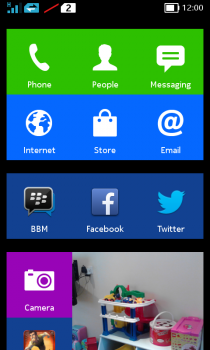
Just like on Windows Phone, the layout of these tiles can be customised and all apps you install have a shortcut created at the bottom of the home screen by default.
There is a limited set of widgets that can also be added to the home screen, but apps can install more widgets just like on normal Android. And so the home screen becomes a mix of widgets and app shortcuts, some of which can also show more information.
Having a mix of apps and widgets on the home screen is ok if a little confusing at times – there is no other way of accessing application shortcuts. The way that newly installed apps fall to the bottom of the vertically scrolling list can be confusing.
An Android based device will generally have more than one physical control button, but the Nokia X only has one, a back key. You can long press it to go home, but there is no equivalent to a menu or task-switching button on the Nokia X.
However, Nokia gives no indication that holding the back button will take you to the home screen and this initially confused me as I pressed back multiple times to exit applications, a long and boring task
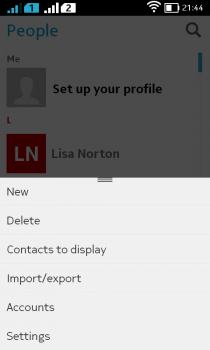
Menus are shown at the bottom of the screen when they are needed in a little tray that you pull up to display, not unlike Windows Phone.
Notifications are handled quite differently to Android. They are shown in a coloured bar at the top of the screen and then disappear after about five seconds.
Tapping on a notification does nothing, which is also rather odd. Having received a new notification, you have to remember which app it came from, then head back to the home screen and find the relevant app.
The lock screen will show your most recent activity from Fastlane but there are options to hide potentially sensitive information. Swiping right or left takes you to the home screen or whatever app was last open.
Included on the Nokia X is a custom-built web browser that works reasonably well. In another move that seems to go against the idea of pushing Microsoft services, you can customise which search engine is used extremely easy. Another opportunity to push Microsoft services, in this case Bing, missed.
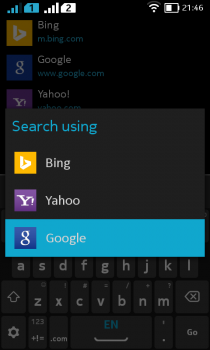
The keyboard included on the X is workable and comes with a decent enough correction engine. Luckily SwiftKey is available in the Nokia Store and comes highly recommended. It is also quite a bit faster.
Whilst the UI can be a bit confusing, it still remains simpler to get to grips with than vanilla Android as there are fewer concepts to learn. The real issue here is with performance and frankly it is poor.
Geekbench 3 is not available for the Nokia X. Indeed most benchmarking apps cannot be installed and so we are left with in browser tests.
SunSpider is one of the better examples of this, where the Nokia X takes 2634 milliseconds to complete the series of tests. Even the cheapest Nokia Windows Phone – the Lumia 520 – completes the test significantly faster in around 1470 milliseconds. When it comes to SunSpider, faster is always better.
This benchmark shortcoming is only the start of a disappointing story where performance is concerned. The Nokia X always feels slow, always feels at least two steps behind whatever you are trying to do and never inspires confidence that it will just get the job done when you are in a hurry.
It is fair to say that the Nokia X simply does not like to be hurried. Apps open slowly and interactions take some time. It can be a frustrating experience.

The worst culprits when it comes to performance are the Nokia home screen and the keyboard. If you install SwiftKey from the Nokia Store to replace the included keyboard, the typing becomes a far more pleasurable experience.
Installing a replacement home screen such as Apex, which is available as a free download from the software vendor’s website, is just as refreshing an experience. Apex runs much more smoothly and also gives you back the familiar Android home screen feel.
Using the Nokia X for email, messaging and as a web browser is fine but also a little slow. The email app does work reasonably well though and the web browser is not at all cumbersome. The phone dialer is fairly quick to respond by the standards being set here.
I was left with a feeling that Nokia just cut the specs of the X a little too cheaply, but then again the price is very low. I still have to question whether this low cost is low enough to warrant this level of performance.
All Windows Phone devices, even the cheapest, perform significantly better than the Nokia X and even some similarly priced Android phones will be less frustrating overall. On the other hand, the best Asha phone will be as slow but do a lot less than the Nokia X is capable of.
Battery life and the essentials
Battery life
At just 1500mAh the battery inside the Nokia X is fairly small. It still packs more juice in than an equivalent Nokia Asha phone, and just a few percent more than Nokia’s Lumia 520, the cheapest Windows Phone Nokia make.
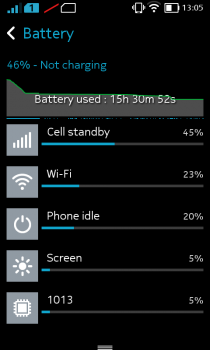
Its overall battery performance was adequate and when the Nokia X is idling its battery drain is very low.
Once the screen is on and the phone has to do any work, its humble internals have to be ramped up to full power to achieve results, leading to pretty high drain.
Our standard NyanGareth battery test, which loops a video for 90 minutes at standard screen brightness, drained a fully charged battery down to 64%, which is a fairly poor result.
The test was run at full screen brightness that registered only 260 lux. We normally run the test at a higher screen brightness.
One oddity I found with this particular Nokia X was that the battery meter appeared to report inaccurately. When the phone said it had half the capacity remaining, it was more like a third, which puts a dampener on the previously mentioned result.

In day-to-day use, the Nokia X would get me through a day but then I was less inclined to actually use it than I would many other phones that offer a better experience.
One of the interesting features on the X is its dual SIM capability, but this will always have an impact on battery life. All my previous results and comments were based on using just one SIM in the phone in general.
I put a second SIM in the Nokia X for a few days to see how it would respond. Nokia has obviously put a lot of effort into optimising its antennae setup with the X as it performs fantastically under these circumstances with almost no additional drain.
There are no special power-saving modes on the X, so getting the most out of a full charge is entirely down to you. If you use the phone heavily, be prepared to regularly charge the Nokia X.
The essentials

With a dual SIM device, the first choice that needs making when you want to make calls and send text messages is which SIM to use. On the Nokia X, there is a special menu for choosing this or you can set the phone to ask you each time you make a call or send a text.
The selected SIM card is shown with its signal meter in blue while the other indicator remains white.
The dialer is extremely basic with no searching for contacts as you enter numbers on the keypad. You do have quick access to your contacts from the dialer though, so it is quite easy to use.
Call quality is good in all conditions. Quality can be a bit patchy, but in general there will be no complaints. Signal strength remained high at all times showing how much work Nokia have put into the antennae design of the X.
People on the other end of a call were happy with how well my voice came through and had no cause for complaint. There does not appear to be a secondary mic on the Nokia X, so noisy environments might be an issue, but I found it to work well all the time.
The speakerphone is very loud and clear enough to make a call. I did have to raise my voice a little for others to be able to hear me, but it was never a big problem.

Messaging works well and the app looks very similar to the standard Android messaging app. The keyboard however does get in the way somewhat. It has a reasonable prediction engine and correcting typos is easy enough, but the problem is its performance.
By default, the key press sounds are enabled on the keyboard and this highlights how slowly the Nokia X responds to touches. The little sound that accompanies typing is always a little behind what you are actually doing.
The keyboard supports input by swiping over letters rather than having to tap on each letter individually, but it struggles to distinguish between the two input methods. In general, installing SwiftKey for free from the Nokia Store is recommended. It is much faster and less frustrating to use.
For data, you get to choose which SIM card slot to use though only one slot supports 3G. The Data speeds aren’t great on paper, but the Nokia X has such good signal strength that in reality it works very well, pulling information in as quickly as it is able to process that data.
There are a few games pre-installed on the Nokia X including Fruit Ninja and Bejeweled 2. These are not taxing and run really well.
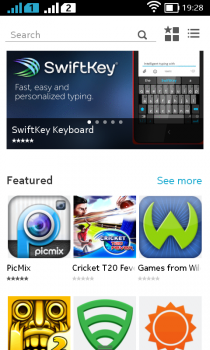
The touch screen is not the most responsive unit I have used, but it is good enough for this level of gaming. Anything more taxing is a real issue for the Nokia X and its basic hardware.
The Nokia Store is where you will primarily get your apps from and it has a better stock of titles than I expected. Although it is still lacking overall I am sure it will fill up quite quickly, as Nokia has provided migration tools for existing Play Store apps and say that around 70% of apps run without modification.
Apps are organised into categories and there is a search facility, although I found that highly temperamental, often returning incorrect results.
No account is necessary to download free apps, you can just browse and install at will which makes a nice change from being forced to open new accounts as many platforms insist.
Camera and media
Camera
As with any phone at this price point the Nokia X has a very basic camera, which is understable. It is 3MP fixed focus camera with no special modes and it doesn’t have a HDR mode. But it is not completely unworthy.

The interface is very simple with a capture button, a zoom slider white balance and exposure controls. There is no touch to focus control, as it is a fixed focus camera. You also cannot lock the auto exposure to a particular point in the frame either.
Switching to video recording or the panorama shot mode is very simple with just a touch of the camera icon in the bottom corner.
Panoramas are captured automatically; you just start the recording and move the phone through 360 degrees. It will tell you on screen if you are moving too quickly. The end results are fairly poor though.
The maximum video resolution is just 854 x 480 but the Nokia X actually does a pretty good job. As it cannot adjust focus, video is very stable and it puts more expensive handsets to shame. If only the capturing resolution was a bit higher.
Videos can be saved in various formats as well which is a nice touch and MPEG4 is included, making sharing easy.
When taking pictures, you can set the ISO manually, tweak the saturation, contrast and sharpness. Images are captured at a maximum resolution of 2048 x 1536 which is a 4:3 aspect ratio. Generally image quality is low, but it will be ok for sharing to a social network.
There is no front facing camera and there is no flash on the back, so all we have is the basic rear shooter.

Click here for the full res image.

Click here for the full res image.

Click here for the full res image.

Click here for the full res image.
Media
With its support for microSD cards plenty of music and videos can be easily stored on the Nokia X. Playing them back involves using some very basic but functional built in apps.
The music player organises your music by artist, album or song and has a nice now playing screen, which shows album art too.
The artwork and basic controls are also shown on the lock screen, which looks great though you lose the large clock to make room for this information.

There is a simple five band equaliser and a bass boost and 3D effect slider to adjust how things sound.
The problem is that sound output through headphones is of average quality at best and using the equaliser and other effects leads to distortion more than anything. I found using these effects to be a big battery drain as well and just not worth the trouble.
The Nokia X has no video player as such, but browsing to a video file using the pre-installed Astro file manager app will open a video player with scrubbing controls and not much else. Video playback works absolutely fine with the standard set of Android formats supported.
There are no options for purchasing media of any type installed on the Nokia X, but Nokia MixRadio is provided which allows for free streaming of music. You can only skip six tracks per hour though.
There doesn’t appear to be an option to purchase MixRadio+, which gives unlimited track skipping, and unlimited offline mixes, but at least there is some option on there. The MixRadio music selection is very wide and the app works very well indeed.
With a small and relatively low-resolution screen combined with a poor internal specifications, gaming is not the Nokia X’s forte. Simple games like Angry Birds play well enough but anything heavier causes frame rates to drop.
The competition
With Nokia pitching the X at the budget end of the market, there are plenty of alternatives, but which are the best?
Nokia Asha 503
Nokia have another budget offering in the Asha 503. The 503 can be found for very competitive prices on Pay As You Go with O2 selling it for just £39.99, and other offers are available if you shop around.
For your money, you are getting the pinnacle of the Asha line-up but this is not a fully featured smartphone. The Asha range devices are defined as feature phones. Despite that, it has a higher resolution camera than the X, includes a flash and has good battery life.

The Asha 503 has a unique and interesting design with a clear plastic shell around the coloured phone, it looks great and come in a wide range of colours.
On the downside, it is a little slow and has a very small screen at just 3 inches with a low resolution that makes it hard to use at times. The interface is not very advanced and the range of apps less interesting than the potential for the X.
If you are buying on Pay As You Go (PAYG) and your budget is extremely tight, the 503 is a decent offering, but the X is a much better prospect over time and is a full smart phone platform.
Nokia Lumia 520
Completing the triumvirate of Nokia platforms, the Lumia 520 is a viable offering at the budget end of the market,
In every mentionable way, the Lumia 520 beats the X. It has a much better screen and the processor in the 520 is significantly faster. The software it runs also makes much better use of the available power.
The 520 has a far more powerful camera and at 5MP, it packs in much more detail in your shots. It supports HD video recording as well.
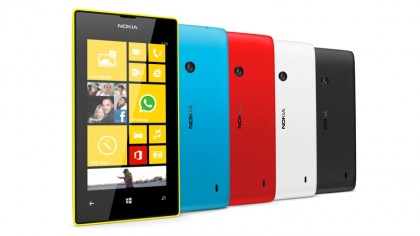
There is more internal storage on the Lumia 520 too and with the same support for microSD cards, you are not missing out in any way.
The Lumia 520 runs Windows Phone, which is a lovely and very powerful smartphone platform, but lacks in the app department compared to Android. Of course, the Nokia X doesn’t run Android, but it has the potential to run all those Android apps.
Price is the biggest issue, but still it comes in at under £100 SIM free, plus it’s possible to find the 520 even cheaper on PAYG.
Motorola Moto G
Undoubtedly the most exciting Android phone in the price range is the Moto G.
Motorola managed to pack in a HD screen, a fast processor, a big battery and decent build quality into a device starting at just £99 on PAYG. It runs the latest version of Android and has some good Motorola build software enhancements.
The camera on the Moto G is reasonable and certainly a match for the Lumia 520.

The Moto G runs full Google Android with access to the hundreds of thousands of apps on the Google Play store and the full range of Google’s movies and music offerings.
Compared to the Nokia X the Moto G is a far more accomplished offering. But it is more expensive and does not have expandable storage, so at the cheapest end of the range you have to make do with just 8GB of storage, which is very limited.
Verdict
What Nokia has brought to the table here is a phone that has fantastic design, great build quality and materials that belie its budget price. There are phones costing five times as much that feel half as good.
The launch pricing of the X in its first markets is €89 and official UK pricing is unknown. But most phones will not sell at their recommended retail price for long. If the Nokia X can be bought for anywhere close to £50 on Pay As You Go, then it will be a good bargain and can be recommended.
Nokia makes a much better smartphone in the guise of the Lumia 520, if your budget can stretch that far, so while the Nokia X has a place in the market its pricing is crucial.

We liked
The Nokia X looks like a much more expensive phone, especially in one of the brighter colour choices.
Fastlane is a useful and intuitive addition to the software that helps you find your way around, especially if this is your first smartphone. Dual SIM and very strong reception leads to a good basic phone experience.
Glance Screen puts the time and some notification information on your screen without it being fully powered on, a premium feature on a budget smartphone.
We disliked
The screen does not go bright enough and with only two touch points, it can be tricky to see and use.
The standard home screen is slow and clunky to manipulate. Alternative home screen launchers offer a much better experience and Nokia should have done better.
Battery life can be very weak when using the phone, it drains alarmingly quickly when browsing and using apps in general. The keyboard on the Nokia X is slow and hard to type on.

Final verdict
To put it simply, the Nokia X is very far from the best smartphone out there. It runs on an outdated version of Android with a slow and clunky, albeit quite attractive Nokia made interface on top. The camera is extremely basic and its battery endurance leaves a little to be desired.
The future remains very uncertain for the Nokia X and it is yet to be seen as to whether Microsoft will continue the venture when its buyout of Nokia is complete. Even if it does, will the X ever get updated to a newer version of Android as its base? That would definitely help smooth out some of the performance issues.
Even with these doubts, at the right price, the Nokia X is a decent smartphone and can be recommended. I can’t help but feel that had Nokia put Google Android instead of its own flavour on the X then it would be an even better phone.
![]()








I have used Nokia Lumia 520 and I must say that it’s a very good phone and comes in a good price.